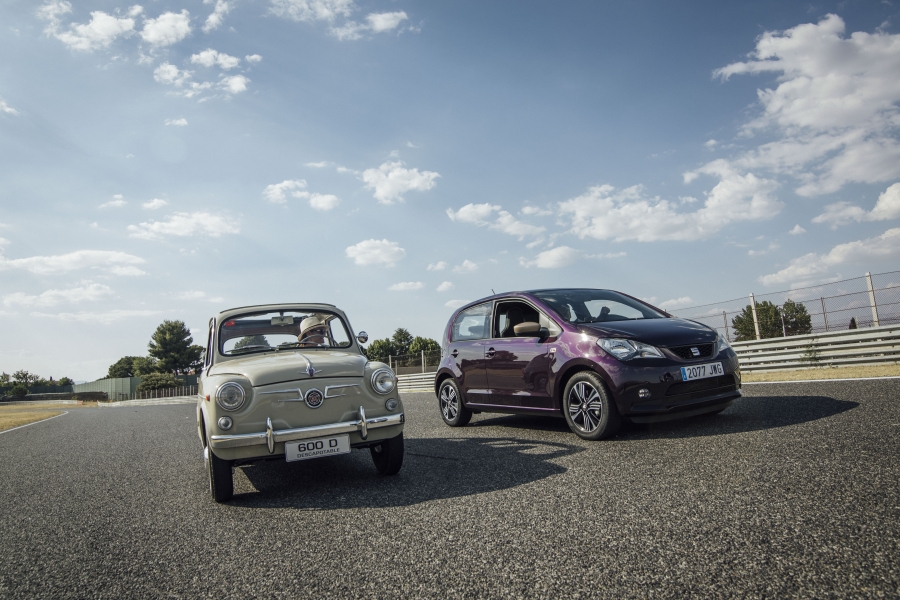Six major differences in 60 years of driving
60 years later, cars have gone from featuring no seatbelts or headrests to including airbags and electronic safety systems. The SEAT 600 and its successor, the Mii, exemplify the evolution of cars in recent decades.
Making the ‘Little Ball’ took 40 hours, while it only takes 16 to make a car today. Both cars are roughly the same size and are considered urban utilitarians, and the two responded to mobility needs at different times. They are the SEAT Mii and the 600, which this year is celebrating its 60th anniversary. Together we take a look at their peculiarities and the six major differences between two eras and two distinct driving styles:
1. Three times more boot capacity: Space was no impediment for five members of a family to set out on their destination with their luggage for a month. Located at the front of the car, the boot capacity of the 600 was 68.5 litres. Although the Mii’s dimensions are similar, its boot is three times bigger, with a total of 238 litres, and is located at the rear as on most current cars.
2. Doors hinged at the rear: One of the characteristic features of this 50s car is that the doors on its initial versions were hinged at the rear, and opened towards the front. Another feature of this model was the seats, whose design and upholstery were similar to a sofa.
3. From no seatbelts to the most advanced safety systems: The early 600s were not equipped with seatbelts or headrests, so only 40% of a person’s body connected with the seats. On the other hand, not only does the Mii include both of these elements, but it also features four airbags and the most advanced safety systems and assistants, such as the city brake, which detects obstacles and automatically prevents collisions, technology which was unheard of more than half a century ago.
4. The strength it took to turn the steering wheel: Parking the 600 required good arm strength to turn the steering wheel. It was a strenuous effort, especially in summer, when the only way to cool down was to open all the windows to let in some breeze. By contrast, the electro-hydraulic power steering on the Mii makes steering smooth and effortless, and the air conditioning system makes driving much more comfortable and pleasant.
5. Manufacturing time from 40 down to 16 hours: 800,000 units were made of the “Little Ball”, as it was commonly known, from 1957 to 1973. In light of the booming demand for this model, production increased six-fold in 1958. Manufacturing one of these vehicles took more than 40 hours, while the Mii or any other current model now only requires an average of 16, even though they are much more complex.
6. From the car that put a country on wheels to a car for day-to-day needs:Launched in 1957, the SEAT 600 signalled the massive arrival of cars in Spain and completely changed mobility for the middle classes, enabling entire families to go on holidays together. On the other hand, the SEAT Mii was created in 2011 as an urban vehicle that also made it possible to go on long trips, consuming nearly half as much as its predecessor: an average of 4.5 l/100 km compared to between 7.8 and 8 l/100 km required by the SEAT 600.
Source: SEAT
